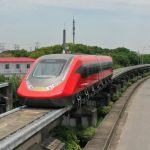Among the many means of transportation, the most popular is the subway. First of all, it is very fast. Even in large cities like Beijing and Shanghai, it only takes an hour to travel around.
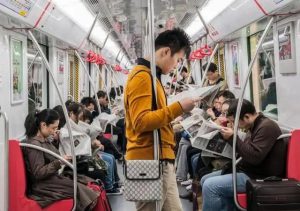
Secondly, the subway fare is very cheap. Most cities only need to spend 3 or 5 yuan, as long as you don’t leave the station, the subway ticket is valid. Crowded people have become the norm during the rush hour on the subway in the city.
But because of this, subway companies rarely make profits. In fact, among the more than 40 cities in China that have opened subways, only 7 cities have achieved profits. Beijing directly lost 7.3 billion yuan.
Only 7 cities in the country make a profit for the subway, and the Beijing subway loses 7.3 billion
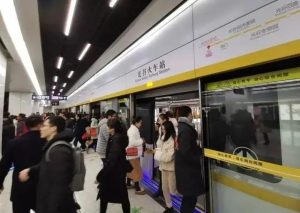
From the statistics of 2020, the passenger flow of China subway transportation is as high as 17.59 billion passenger-times. Such a huge passenger transportation volume puts huge pressure on subway operation lines in various cities.
Cities like Beijing, Shanghai, and Chongqing have built 10 or more subway lines because of the excessive daily passenger flow. Even in cities with less operational pressure, there are at least 5 subway lines.
But even with such a busy subway operating system, most cities continue to post money to it, and only a few cities are making a profit.
Through the investigation of the China subway operation data in 2020, it is found that only the seven cities of Shenzhen, Shenyang, Nanchang, Jinan, Xiamen, Wuhan and Lanzhou are profitable.
Two cities like Beijing and Shanghai, in September of 2021, the accumulated passenger flow was 27 million and 29 million respectively, which accounted for 13.6% and 14.9% of the China subway passenger flow respectively. But even if it ranks among the top two in passenger traffic in China, Beijing and Shanghai’s subway operations are still at a loss, because the daily maintenance and kinetic energy supply of the subway is far beyond the ability of the subway fare.
Taking Beijing as an example, the subway fare starts at 3 yuan, and in 2019, the operating cost of all subway lines in Beijing has reached 11.5 billion yuan, and the average maintenance fee for a subway line is 760 million yuan. Calculated on the basis of the passenger traffic volume of 27 million people in Beijing in September, a monthly revenue of 81 million yuan, and a year of only 972 million yuan of revenue, is simply not enough to make up for the costs incurred by subway operations.
Looking at the revenue of Beijing Metro in 2020, revenue reached 13.6 billion and net profit reached 3.156 billion. This does not look like a loss, but it should be noted that 10.463 billion of net profit comes from government subsidies. This also means that if there is no government subsidy for this item, then the Beijing subway will actually lose 7.3 billion directly, and this is not the most “burning money” city, and the Chengdu subway’s loss is even more serious.
The net profit of Chengdu Metro in 2020 will reach 1.476 billion, and its subsidy amount will be 9.144 billion, which is equivalent to a loss of nearly 7.6 billion.
Nevertheless, the construction of subways in most cities has never stopped. Basically, new lines will be opened every few years. This is also a helpless move. After all, with the development of the city, the subway line needs to cover every corner as much as possible, so that all residents can take the subway after they go out.
Shenzhen Metro is the most profitable, with a net profit of tens of billions a year
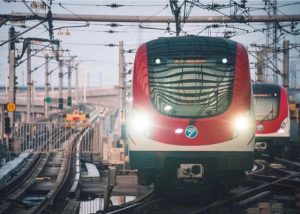
Under the influence of various factors, most urban subways are in a state of long-term loss. Of course, there are also very profitable cities. This city is Shenzhen.
In terms of the current development among cities, Shenzhen Metro should be the most profitable. During 2020, its revenue reached 20.828 billion yuan, and its net profit was 11.102 billion yuan. This net profit is different from Beijing and Chengdu. Among them, their own net profit is relatively large, with only 36 million yuan from China’s subsidies, which is equivalent to a net profit of tens of billions.
Then, when Beijing is losing money, why can the Shenzhen Metro make so much money?
In fact, this is mainly based on the real estate business, 70% of which are obtained from real estate, because the Shenzhen Metro will have a large shopping mall underground, and there will be properties on the ground. Under the support of this business model, the Shenzhen Metro is easy to earn tens of billions.
Until August of 2021, Shenzhen broke into the top ten list of China subway operating capabilities, but it is worth mentioning that this list is not based on which city’s subway makes more money, but a comprehensive evaluation, from passenger traffic, Starting from many aspects such as transportation speed and radiation range, Shanghai ranked first, Beijing ranked second, Chengdu ranked third, followed by Guangzhou, Shenzhen, Wuhan, Nanjing, Chongqing, Hangzhou and Qingdao.
The subways in most third-tier cities are halted, and the lack of flaw is even more serious
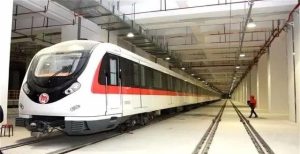
Both Beijing and Chengdu are major economic development cities in China, but their subway business has suffered serious losses. In the case of continuous losses in the subways of large cities, according to relevant information, many third-tier cities have directly stopped the subways.
After all, the financial strength of third-tier cities is not strong enough, and the flow of people is relatively small. After the construction of the subway in the city is put into operation, it will be even more difficult to achieve profitability. Based on this background, so many third-tier cities have suspended subway operations, and it is reasonable for the subways in small cities to lose money.
In September of this year, the total number of domestic subway passenger transport has reached 1.989 billion passengers, and the number of people transported every day is as high as 66.31 million, which means that the domestic subway demand and service capacity are steadily increasing.
Although each city’s investment in the construction of subways may cause urban financial losses, for the sake of development and the interests of the common people, the popularization of subway lines is still a goal that must be achieved.

